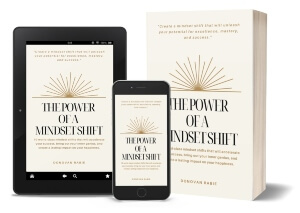In our journey of personal growth and self-discovery, healing the inner child is a profound and transformative process. Our inner child represents the vulnerable and authentic self that experienced various emotions, traumas, and wounds during our early years. These experiences can shape our beliefs, behaviors, and relationships in adulthood. However, by engaging in a therapeutic practice like journaling, we can consciously connect with our inner child, uncover deep-rooted wounds, and embark on a journey of healing and transformation. This article delves into the power of journaling as a tool for healing the inner child and offers practical insights on how to begin this cathartic process.
In This Article
ToggleUnderstanding the Inner Child
The inner child refers to the aspects of our personality and psyche that were formed during childhood. It encompasses our emotions, needs, fears, and desires from that time. Our inner child is deeply influenced by the experiences and interactions we had with our caregivers, family, and environment. Positive experiences during childhood can foster a healthy and confident inner child, while negative or traumatic experiences can result in wounded and unresolved aspects.
10 world-class mindset shifts that will…
~ Accelerate your success.
~ Bring out your inner genius.
~ Create a lasting impact on your happiness.
Price From: $5.18
The Power of Journaling
Journaling is an invaluable practice that can provide a safe space for exploring and processing emotions, memories, and thoughts. It serves as a bridge to connect with our inner child, allowing us to express ourselves authentically without judgment. By putting pen to paper, we can access our subconscious mind, unravel buried memories, and gain insights into our emotional landscape. Journaling also facilitates self-reflection, self-awareness, and self-compassion, which are vital for healing our inner child.
Creating a Journaling Practice
To begin your journey of healing the inner child through journaling, here are some practical steps to consider:
1. Establish a Safe and Sacred Space
Designate a quiet and comfortable space where you can focus on your journaling practice without distractions. Make it a nurturing environment that promotes relaxation and self-expression.
2. Set Intention
Before starting each journaling session, set a clear intention to connect with your inner child and invite healing. This intention will guide your exploration and set the tone for your journaling experience.
3. Start with Prompts
If you’re unsure where to begin, start with journaling prompts specifically tailored for healing the inner child. These prompts can range from exploring childhood memories, identifying emotional triggers, or envisioning the nurturing presence of your adult self comforting your inner child.
4. Embrace Authenticity and Vulnerability
Allow yourself to be vulnerable and authentic in your journaling. Write without filters or self-censorship. This openness will enable you to access deeper emotions and uncover hidden wounds that require healing.
5. Practice Active Listening
As you journal, tune in to the voice of your inner child. Listen attentively to their needs, fears, and desires. Acknowledge their pain and offer compassion and understanding.
6. Express Through Creativity
Don’t limit yourself to just writing. Incorporate creative outlets such as drawing, painting, or collage-making into your journaling practice. These mediums can provide alternative ways to express and communicate with your inner child.
7. Seek Support if Needed
Remember that healing the inner child can be a challenging process. If you encounter intense emotions or find it difficult to navigate certain memories, it may be beneficial to seek support from a therapist or counselor experienced in inner child work.
Transforming Wounds
Through consistent journaling practice, you can gradually begin the process of transforming your inner child wounds. The act of acknowledging and validating your past experiences empowers you to rewrite the narrative, foster self-compassion, and cultivate resilience. Here are some additional strategies to support this transformative journey:
1. Self-Forgiveness and Compassion
Extend compassion and forgiveness towards yourself and your inner child. Recognize that you were doing the best you could with the resources and understanding you had at the time. Embrace self-compassion as a healing balm for your wounds.
2. Reparenting the Inner Child
As you journal, imagine your present adult self nurturing and comforting your inner child. Offer them the love, support, and validation they may have missed during their formative years. Visualize a healthy and loving connection between your adult self and inner child.
3. Integration and Growth
Journaling helps integrate your past experiences into your present self. As you uncover and heal wounds, you can begin to rewrite negative beliefs and patterns, replacing them with empowering narratives. Embrace personal growth as an ongoing process of self-discovery and transformation.
4. Celebrate Progress
Acknowledge and celebrate your progress along the way. Healing the inner child is not a linear journey, and there may be ups and downs. Embrace each step forward and recognize the resilience and strength you embody.
Conclusion
Healing the inner child through journaling is a powerful and transformative process. By creating a safe and sacred space, setting intentions, and engaging in deep self-reflection, you can uncover and transform wounds that may have hindered your personal growth. Remember to be patient and gentle with yourself as you embark on this journey. With consistent practice and self-compassion, you can cultivate a profound sense of healing, self-awareness, and emotional liberation.



